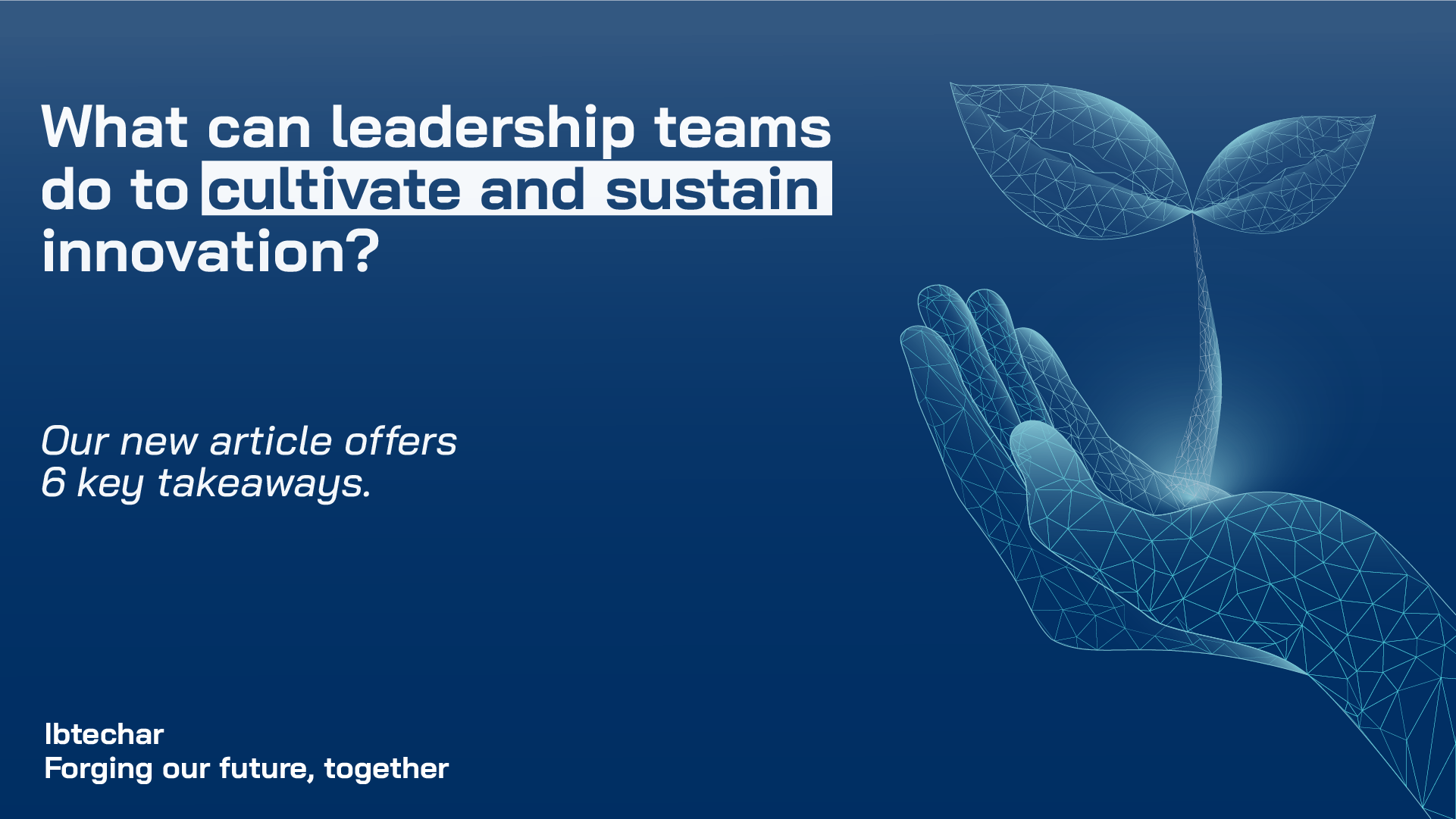It’s time to break free from the project trap
For many organisations, innovation is confined to discrete projects — addressing one specific issue or problem within a narrow context. While these projects may succeed in delivering short-term solutions, they rarely spark lasting, transformative change. True innovation demands a more holistic, all-encompassing approach.
This means moving beyond isolated initiatives and fostering a culture where innovation is everyone’s responsibility, not just the remit of a dedicated team. Cultivating this organisation-wide ownership of innovation requires a fundamental shift in mindset.
Every successful journey needs a clear roadmap
Without a clear vision of the challenges ahead, innovation efforts can become fragmented and quickly lose direction. The structured framework we lay out in our white paper provides the roadmap for a successful innovation journey — offering a practical and adaptable four-stage model.
It begins with building a shared understanding of what innovation means within the context of the organisation, then moves on to developing the necessary skills and resources, fostering collaboration, and ultimately embedding innovation into the organisation’s DNA.
A culture of innovation starts with sponsorship from the top…
Innovation isn’t simply about adopting new technologies or chasing the latest trends. It represents a profound cultural shift, requiring a change in mindset and behaviours throughout the organisation. It’s about fostering a culture that values creativity, collaboration, and a willingness to challenge conventional thinking.
Leadership plays a crucial role in driving this cultural shift. By actively championing innovation, recognising and rewarding innovative contributions, and building a culture of continuous learning, leaders can create an environment where innovation thrives.
…but it succeeds by involving all employees
While leadership buy-in and support are essential, developing a sustainable innovation culture requires a concerted effort by all members of an organisation. That means empowering employees at all levels to contribute — seeking out and valuing employee input, providing constructive feedback, and celebrating successes.
This can take various forms: providing access to training and development opportunities, equipping employees with the necessary tools and resources, or creating dedicated innovation spaces or labs as a focal point for innovation activities.
Each organisation’s innovation journey is different
One size does not fit all when it comes to innovation. We work with leaders to assess their organisational capabilities and tailor our framework to their unique objectives and challenges. This might involve adapting the specific activities within each stage or adjusting the overall pace of implementation.
The goal is to arrive at a version of the framework that can be implemented consistently and thoroughly, ensuring that it becomes an integral part of the organisation’s strategy and operations.
Openness to change is a key predictor of success
Embracing change is paramount to successful innovation — not only being receptive to different ways of thinking but actively promoting them. This means moving beyond the limitations of a “fear of failure” and embracing experimentation.
It requires a growth mindset, where challenges are viewed as opportunities for learning and improvement. Leaders must champion this attitude, creating an environment where new ideas are welcomed and employees feel empowered to challenge the status quo.
Discover a framework for innovation success
Our recent white paper, “Grassrooting Innovation in Qatar: Moving from project-based to holistic thinking” explores the arguments above in greater detail — and offers a logical framework for leaders of organisations looking to build and sustain a culture of innovation.
Fill out the form below to download your copy today — and take the first steps on your innovation journey.
